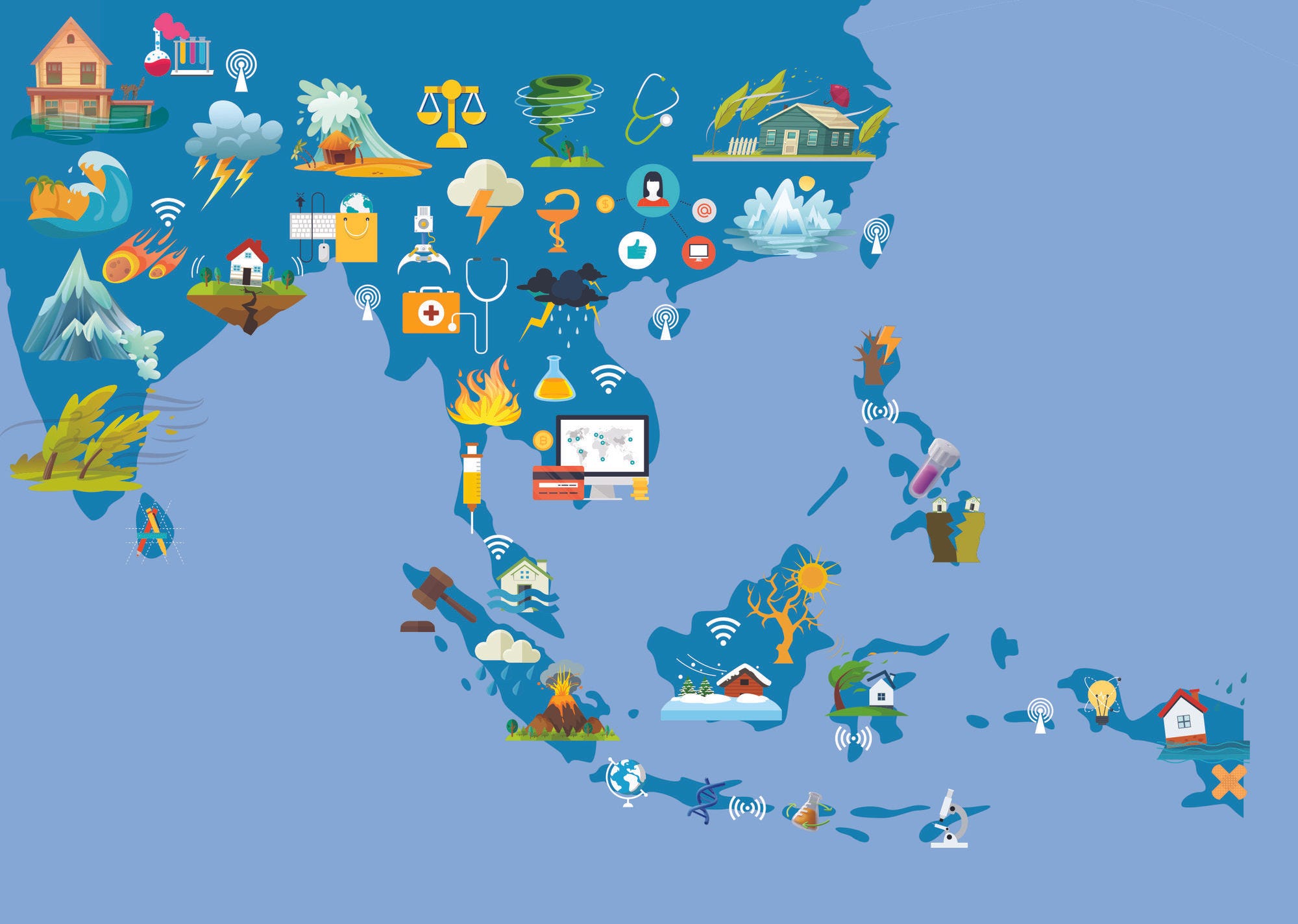Emerging Asia is one of the most disaster-prone regions of the world. Beyond their potentially devastating immediate effects, disasters hinder the achievement of sustainable development. Achieving disaster-resilient development requires the strategic introduction of a holistic policy approach. Better co-ordination is essential for this approach to be effective. This includes governance and institutional capacity, budgeting, risk financing, infrastructure and land use planning, training and education, health, adoption of cutting-edge technology, and partnerships with the private sector.
Weak disaster risk reduction strategies persist in many Emerging Asian countries. Strengthening institutional capacity is critical. Developing robust risk assessment, providing capacity building in all phases of disaster management, as well as reviewing and updating laws and regulations are required to enhance disaster management.
Lack of funding is another roadblock to disaster resilience in the region. Steps that governments can take to strengthen their budgets for disaster risk management include ensuring quick access to sufficient disaster budgets and increasing the availability of funds for ex-ante measures.
Broadening disaster risk financing options is also important. Effective disaster risk financing requires formulating a grand design that covers the entirety of the economy. Facilitating access to disaster insurance and risk transfer instruments and ensuring their widespread delivery to populations at risk is crucial.
The resilience of infrastructure is key to mitigating the impacts of disasters. Policy measures for developing disaster-resilient infrastructure include applying disaster risk assessments; ensuring appropriate and adequate financing; developing operation and maintenance approaches for all phases of the disaster cycle; conducting regular monitoring and evaluation; and fostering effective collaboration among stakeholders. Integrating nature-based solutions into disaster-resilient infrastructure development represents another crucial step in protecting society from natural hazards and ensuring a sustainable future.
Comprehensive land-use planning is essential for identifying the needs of communities in disaster-prone areas. Such plans can help to direct development away from vulnerable land, lay the foundations for space acquisition and nature conservation campaigns, and encourage the utilisation of natural topography for disaster mitigation.
Policy makers should encourage the adoption of state-of-the-art technologies and innovations in disaster risk reduction and management. At present, technologies such as the Internet of Things, drones, search-and-rescue robots, big data, artificial intelligence and blockchain technology are not yet fully in use in the region. To successfully adopt such technologies, governments can support investment in research and development, improve access to foreign markets and enact policies that strengthen their country’s capacity to deploy and provide access to them.
Governments should also set overarching, clear and mandatory policies of disaster risk reduction education at the national level while allowing implementation to be adapted to local contexts. Learning materials should be updated regularly and active learning methods should complement classroom teaching. Disaster risk reduction education should be accompanied by monitoring and evaluation, regular training sessions for teachers, and public awareness programmes.
The health impacts of disasters are often enormous. Policy measures for ensuring efficient health responses include developing robust plans for health system co-ordination in response to disasters, taking steps to preserve the health of the general population when disasters strike, ensuring the flexibility necessary to redistribute medical equipment and supplies during a disaster and scaling up mental health services.
Exposure to disasters presents the private sector with a range of challenges. Governments can enact policy measures aimed at enhancing the capacity of the private sector to manage and recover from disasters. Such measures include evaluating the susceptibility of all sectors to disasters, boosting disaster risk governance, facilitating access to designated disaster mitigation and response budgets, ensuring sustainable financing by mobilising public-private partnerships when investing in disaster resilience and encouraging the growth of private catastrophe risk insurance markets.












